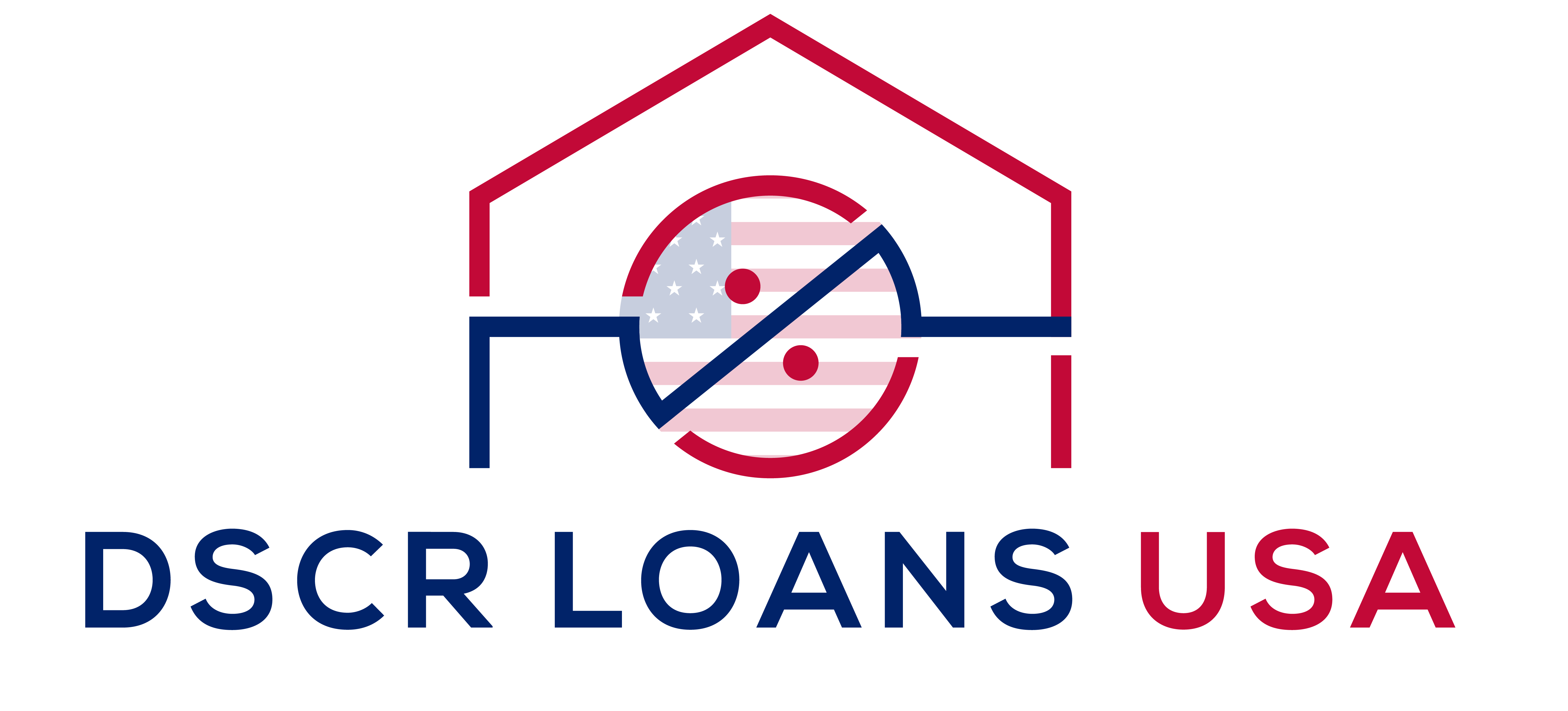Maximize Your Investments: Navigating DSCR Loan Arizona Options in 2024
Securing a DSCR loan Arizona is a strategic move for investors eyeing the state’s real estate market.
This article takes you through the essentials: eligibility criteria, benefits for your investments, and how to capitalize on DSCR loans for optimal financial outcomes, tailoring our insights to Arizona’s unique market conditions.
Key Takeaways
- DSCR loans in Arizona focus on property-generated income rather than personal finance, requiring a Debt Service Coverage Ratio (DSCR) of typically above 1.20 to qualify.
- Eligibility for Arizona DSCR loans depends on creditworthiness, property cash flow, and lender-specific criteria, with some lenders allowing ratios as low as 0.75, while the typical minimum is 1.25.
- Proper management of property cash flow and improving DSCR can lead to better loan terms, allowing investors to expand their portfolios beyond what traditional mortgage loans offer.
Understanding DSCR Loans in Arizona

In the Arizona desert, where the real estate landscape is as varied as the terrain itself, DSCR loans stand out as an oasis for investors. Tailor-made for real estate ventures, these loans pivot from the traditional mortgage realm, focusing on a property’s ability to generate income rather than the personal financial standing of the borrower. This is a game-changer for investors, particularly in scenarios where conventional loan qualifications are out of reach or when the cumbersome process of full documentation loans is less appealing.
DSCR loans in Arizona assess a property’s financial performance through the lens of the Debt Service Coverage Ratio (DSCR)—a metric that ensures the rental income is adequate to cover the property’s debt service obligations. In other words, these loans place the spotlight on the income your investment can generate, setting the stage for a strategic and potentially lucrative approach to property financing.
Debt Service Coverage Ratio (DSCR)
At the core of DSCR loans lies the Debt Service Coverage Ratio—essentially the barometer of a property’s financial health. This ratio, obtained by dividing a property’s annual net operating income (NOI) by its annual mortgage debt payments, acts as a beacon for lenders, who typically favor a DSCR above 1.20 in Arizona. A ratio above this magic number signals that the property isn’t just scraping by but is comfortably covering its debt with room to spare. In addition to DSCR, lenders may also consider the debt to income ratio when evaluating a borrower’s financial stability.
What does this mean for your investments? A DSCR of 1.0 reflects a break-even point where income meets mortgage expenses head-on, but surpass the threshold, and you’re in the realm of excess income—a place where lenders are more likely to nod with approval and offer better terms due to reduced risk.
In the Arizona property market, a strong DSCR is synonymous with a robust investment, providing a firm foundation for financial decisions and loan negotiations.
DSCR Loan Benefits for Arizona Investors
DSCR loans are like a breath of fresh air for Arizona investors, especially for those juggling multiple rental properties or those who find traditional mortgage routes restrictive. The beauty of these loans lies in their focus on property cash flow over personal income, allowing investors to hinge their borrowing power on the financial performance of their rental assets. This is particularly advantageous, considering the diverse and dynamic nature of the Arizona market.
Moreover, the potential for obtaining lower interest rates—starting at an enticing 6.75%—adds another layer of appeal to these loans. A property boasting a higher DSCR ratio could unlock more favorable interest rates, tipping the scales in your favor during negotiations and amplifying the financial benefits of your investment.
Eligibility Criteria for Arizona DSCR Loans
Dipping into the world of Arizona DSCR loans requires a careful assessment of one’s eligibility, which hinges on a trinity of factors: creditworthiness, property cash flow, and specific lender criteria. These loans are particularly well-suited for the self-employed investor or those with a sizable investment portfolio, as the rental property’s cash flow is the star of the show. To cross the threshold of qualification, investors must demonstrate their property’s ability to generate sufficient gross rental income, supported by lease agreements or an appraiser’s estimate.
In addition to rental income, lenders in Arizona don’t shy away from setting other benchmarks such as reserve assets and minimum credit scores, which vary from one financial institution to another. Therefore, comparing and contrasting the criteria of different lenders, including the minimum credit score, becomes a critical step in securing a loan that aligns with your investment objectives.
Minimum DSCR Ratio
When it comes to DSCR loans, not all lenders are cut from the same cloth—each sets their own stage with varying minimum DSCR ratios. Some lenders may be comfortable with ratios as low as 0.75, like the Arizona Rental Loan from Easy Street Capital, which could open doors for investments that others might shy away from. However, a typical expectation for securing a DSCR loan in Arizona is a minimum DSCR of 1.25, reflecting a property’s strong rental income that comfortably exceeds mortgage obligations.
Yet, for those properties where the DSCR ratio hovers below the ideal of 1.0, hope is not lost. Lenders may still extend a hand, provided borrowers have reserves—often up to 12 months—demonstrating a safety net that can sway a lender’s decision. The takeaway is clear: while a higher DSCR ratio is preferable, there’s room for negotiation, and understanding the lender’s approval criteria for the minimum DSCR ratio is essential in the application process.
Property Types Eligible for DSCR Loans
The Arizona landscape is diverse, and so are the property types eligible for DSCR loans. From the comfort of a single-family home to the complexity of a multi-family unit, and even the vast potential of commercial real estate, these loans do not discriminate. Residential investors can find solace in the fact that both single and multi-family homes can be financed under DSCR loans, as long as they meet the rental income guidelines.
Commercial investors are not left in the dust, either. Apartment buildings and retail spaces can also tap into the benefits of DSCR loans in Arizona. And for those looking to invest in the tranquility of rural properties, Easy Street Capital’s EasyRent rental loan program extends the olive branch, ensuring that no property, no matter how remote, is beyond the reach of financial support through investment property loans.
Calculating DSCR for Your Arizona Investment Property

Knowing the ins and outs of calculating DSCR is crucial for any investor looking to capitalize on Arizona’s real estate opportunities. The calculation is straightforward yet powerful: compare the property’s rental income to its debt obligations, and you’ve got your DSCR. Monthly rental income is weighed against the monthly mortgage principal, interest, taxes, insurance, and association dues (PITIA), providing a snapshot of the property’s financial viability.
Taking an annual perspective, the DSCR is determined by comparing the property’s annual rental income against its annual debt obligations. To improve your property’s DSCR, you can either increase rental income or reduce monthly debt service obligations—an essential consideration for maintaining a healthy financial profile and appealing to lenders.
Net Operating Income (NOI)
The pillar supporting the DSCR calculation is Net Operating Income (NOI), representing the income generated after operational costs are deducted, such as:
- management fees
- taxes
- insurance
- maintenance
NOI is a critical measure, as it excludes non-operational expenses like taxes and interest, offering a pure view of the property’s income-generating ability. However, it’s worth noting that non-cash expenses like depreciation and amortization can deflate NOI, thus influencing the DSCR.
Discerning investors will focus on maximizing NOI as it directly impacts the DSCR. Strategies to enhance NOI encompass streamlining operations to reduce costs and optimizing rental income to ensure the property continues to be a profitable asset within the portfolio. After all, the higher the NOI, the more favorable the DSCR—and the brighter the prospects for loan approval and investment growth.
Factors Affecting DSCR Calculation
Several factors play a role in the DSCR calculation, each affecting the final ratio and, by extension, the attractiveness of a property to lenders. Stable revenue from an investment property is a key influencer, as consistent income streams lead to a higher DSCR, indicating a reduced risk for lenders and a more favorable borrowing environment. Accurate documentation of debt components is also paramount, ensuring that the principal, interest, taxes, insurance, and HOA fees are fully accounted for when crunching the numbers.
It’s a delicate balance, where the aim is to maximize income while keeping debt obligations in check. For a property to stand out in the competitive landscape of Arizona’s real estate market, a favorable DSCR can be a beacon that signals its potential to investors and lenders alike. Understanding and managing these factors can mean the difference between a property that just gets by and one that thrives financially.
Choosing the Right Lender for Your Arizona DSCR Loan

Selecting the right lender for an Arizona DSCR loan is a crucial decision that can have a lasting impact on your real estate investment journey. With interest rates for Arizona rental properties ranging from 6.75% to 9.75% as of 2023, it’s imperative to scrutinize and compare rates across various lenders. When choosing a lender, consider the following factors:
- Interest rates: Look for the lowest interest rate available.
- Expertise with DSCR loans: Ensure that the lender has experience and knowledge in providing DSCR loans.
- Flexibility with loan terms: Find a lender who offers flexible loan terms that align with your investment goals.
- Speed of closing: Consider the lender’s ability to close a deal quickly.
By evaluating these factors, you can make an informed decision and find the right lender for your Arizona DSCR loan.
Investors should seek out lenders that align with their investment strategies, be it long-term hold or a quick turnaround. With DSCR loans offering a spectrum of terms, including full 30-year amortizations without balloon payments or interest-only payment periods, the right lender can significantly influence your portfolio’s profitability. Additionally, lenders that provide low documentation loans, omitting the need for personal debt-to-income ratios and tax returns, can streamline the application process for investors.
Comparing Lenders
When comparing lenders for a DSCR loan, it’s not a one-size-fits-all scenario. Each lender brings a unique set of requirements to the table—some may offer fixed rates, others adjustable-rate mortgages, and each with their own rate structures. Borrowers should be diligent in shopping around to find a lender whose requirements and offerings best suit their financial goals and investment strategy.
The lender’s track record with DSCR loans is also a critical consideration. You’ll want to partner with a lender that has proven expertise in handling the nuances of such loans, ensuring that they understand the complexities and can provide the support necessary to navigate the process successfully. Taking the time to compare lenders carefully can pay dividends in securing favorable loan terms and a smooth path to closing.
Negotiating Loan Terms
The art of negotiation is key when it comes to securing favorable loan terms for your DSCR loan. Arizona offers investors a playground of flexible terms, including extended amortizations and interest-only payment periods, which can be tailored to match specific investment strategies. These negotiable terms can directly improve your property’s debt service coverage ratio and, as a result, its overall financial stability and appeal to lenders.
Investors should not hesitate to discuss their needs and preferences with potential lenders. Whether it’s a preference for a certain type of rate structure or the desire for a particular repayment schedule, the ability to negotiate can lead to more advantageous loan terms that bolster your investment’s prospects and align with your financial planning. With the right lender and the right terms, a DSCR loan can be a powerful tool in realizing your real estate ambitions.
The Application Process for DSCR Loans in Arizona

Embarking on the DSCR loan application process in Arizona is akin to setting out on a strategic mission, one where preparation and understanding of the process are paramount. Assembling the right documentation and grasping the steps involved from start to finish are essential for a successful application. While less personal income documentation is required compared to traditional loans, investors must still prepare financial details related to both their personal and property income.
The choice of lender plays a significant role in the application process, with each lender having their own set of expectations during the various stages of approval. Being familiar with what each stage entails—from prequalification to closing—can help streamline the process, reduce uncertainty, and set the stage for a smoother transition through each phase of the loan application.
Preparing Necessary Documents
The cornerstone of a swift and efficient DSCR loan application is the preparation of necessary documents, including pay stubs. Lenders will seek to verify a borrower’s financial stability and the property’s income-generating capabilities through the submission of tax returns, bank statements, rent rolls, and pay stubs. Having these documents at the ready can significantly expedite the application process, allowing lenders to quickly assess the viability of the loan.
In addition to these financial documents, details about the property itself, such as the address, type, and rental history, are required to provide lenders with a comprehensive understanding of the investment’s potential. Meticulous preparation of these documents not only demonstrates a borrower’s diligence but also facilitates a faster and more favorable review by the lender.
Loan Approval Timeline
Understanding the timeline of the DSCR loan approval process can help set realistic expectations and enable investors to plan accordingly. The journey begins with initial prequalification, a stage where preliminary financial information is provided to gauge eligibility. Following this, the underwriting stage takes place, where a thorough review ensures that all lender criteria are met before moving forward.
The final act in the approval timeline is the closing of the loan, which involves the signing of the necessary documents and the confirmation of loan terms with the lender. Being aware of these stages and their respective timeframes can help investors navigate the process with confidence, knowing that each step brings them closer to securing their DSCR loan.
Maximizing Your Arizona DSCR Loan Benefits
To truly unlock the potential of DSCR loans in Arizona, investors must aim to select properties that not only meet the criteria but have the capability to generate high rental income. The goal is not just to meet loan obligations but to surpass them, creating a buffer that can lead to more favorable loan terms and greater financial flexibility. By improving the DSCR, investors can reduce their risk profile and position themselves for better loan opportunities, whether it’s through increasing rental income, limiting expenses, or optimizing property management.
JVM Lending and other reputable lenders can be invaluable partners in this endeavor, offering tailored advice and customized lending solutions to ensure investors maximize the benefits of their DSCR loans. With the right lender and a strategic approach to property selection and management, investors can enhance their cash flow and leverage their DSCR loans to not only meet their current financial needs but also to lay the groundwork for future portfolio expansion.
Improving Property Cash Flow

Improving property cash flow is pivotal in maximizing the benefits of a DSCR loan. Real estate investors can enhance cash flow by increasing rental income—perhaps by adjusting rents to market rates or adding value through amenities like pet allowances or furnished rentals. Additionally, reducing expenses, such as by making a larger down payment to decrease monthly mortgage payments, can also contribute to a healthier cash flow and a better DSCR.
Effective property management plays a critical role in this equation as well. By keeping expenses in check and ensuring the rental property remains attractive to tenants, investors can maintain a steady and reliable cash flow. This focus on the balance between rental income and financial obligations is crucial for sustaining a robust investment and improving the property’s DSCR. With proper management, investment properties can generate consistent returns for investors.
Leveraging DSCR Loans for Portfolio Growth
DSCR loans offer a powerful advantage for real estate investors looking to expand their portfolios. Unlike traditional mortgage loans, which may restrict the number of properties an investor can finance, DSCR loans in Arizona allow investors to hold multiple mortgaged properties, thus enabling significant portfolio growth. This flexibility is particularly advantageous for professional investors who employ various investment strategies, such as short-term rentals, fix and flips, or the BRRRR method—Buy, Rehab, Rent, Refinance, Repeat.
By leveraging the flexibility of DSCR loans, investors can capitalize on opportunities that might otherwise be inaccessible with traditional financing. Some benefits of DSCR loans include:
- Scaling up a rental portfolio
- Diversifying into different types of properties
- Propelling an investor’s portfolio to new heights
- Fostering long-term wealth creation and financial security.
Summary
In conclusion, DSCR loans emerge as a potent instrument for real estate investors in Arizona, offering a path to investment that transcends personal financial status and spotlights the income-generating power of properties. From understanding the intricacies of DSCR and its calculation to navigating the eligibility criteria and selecting the right lender, investors are equipped with the knowledge to make informed decisions that can lead to prosperous outcomes.
Let this journey through the DSCR loan landscape be your guide to transforming your real estate aspirations into reality. With the right approach, these loans can be the key to not just growing your investment portfolio but also securing your financial future in the vibrant and diverse Arizona market. Embrace the opportunities DSCR loans provide, and let them fuel your real estate ventures to success.
Frequently Asked Questions
What is a DSCR loan, and how is it different from a traditional mortgage?
A DSCR loan evaluates eligibility based on a property’s income potential, using the property’s Debt Service Coverage Ratio, unlike traditional mortgages that focus on personal financial metrics.
What is considered a good DSCR ratio in Arizona?
A good DSCR ratio in Arizona is typically above 1.20, indicating sufficient rental income to cover debt service obligations and meet lender requirements.
Can DSCR loans in Arizona be used for commercial properties?
Yes, DSCR loans in Arizona can be used to finance commercial properties like apartment buildings and retail spaces.
How can I improve my property’s DSCR?
To improve your property’s DSCR, consider increasing rental income by adjusting rents to market rates or adding value-added services. Another option is to reduce expenses by placing a larger down payment to lower the monthly mortgage payments.
What types of investment strategies can benefit from DSCR loans?
DSCR loans can benefit investment strategies such as short-term rentals, fix and flips, and the BRRRR method, offering flexibility and overcoming financing limitations of traditional mortgage loans. DSCR loans are a good option if you want to finance multiple properties.
Ready for More Great Tips and Information? Join Our Email List Today!


Leave a Reply